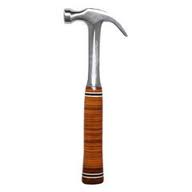Beauty
Websters defines beauty as “the quality or aggregate of qualities in a person or thing that gives pleasure to the senses or pleasurably exalts the mind or spirit.”
The Wikipedia definition of beauty is “Beauty is a characteristic of a person, animal, place, object or idea that provides a perceptual experience of pleasure or satisfaction.”
These two popular definitions support the New Aesthetics stance that Beauty shouldn’t be seperated from Utility, Robustness or Morality, since Beauty or “the quality that gives pleasure” may very well be the utility, morality or strength of the person or thing. Take for example the Wagenfeld Lamp generated by the Bauhaus movement. The lamp is, for many, pleasing to the eye in it’s elegant design and this is sufficient to “give pleasure to the senses”. Let’s consider the case where one doesn’t necessarily care for the appearance of the lamp, but finds that the light it emits is quite pleasing and makes for terrific reading light. Is this function not a form of beauty? How about the engineer who considers neither the appearance nor the quality of light emitted by the lamp, but instead finds the simplicity and efficiency of design and the quality of the component parts to satisfying to his senses? Is this not also beauty being experienced?


